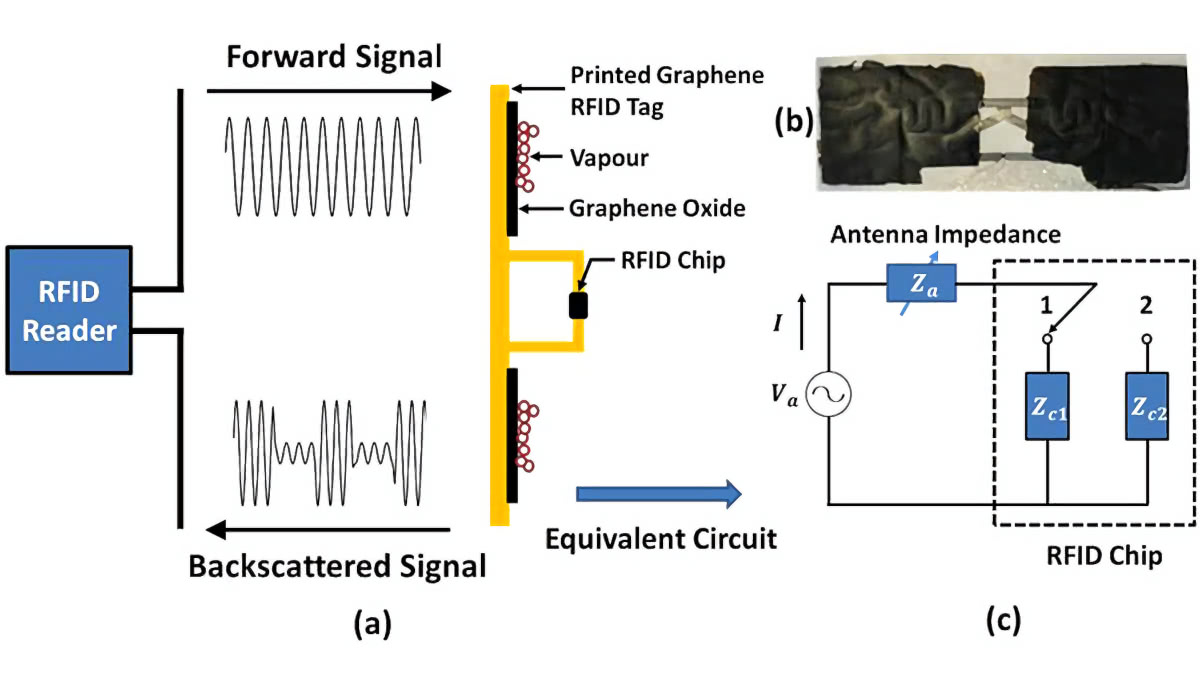Researchers at the University of Manchester have announced graphene-based battery-free sensors which they claim could revolutionise the Internet of Things (IoT).
Using graphene, a layer of carbon one atom thick and which is being hailed as the wonder-material of the future for a range of technologies, in graphene-oxide form, a team of researchers at the University have been able to build wireless humidity sensors which harvest energy from their surroundings with no need for a battery or other energy storage system. While energy-harvesting sensors aren’t new, the team’s use of so-called two-dimensional materials in their construction is claimed to allow for mass production at an extremely low cost – to the point where humidity and other sensors could be added to radio frequency identification (RFID) tags quickly and cheaply.
“This is the first example of printable technology where several 2D materials come together to create a functional device immediately suitable for industrial applications,” claims Professor Sir Kostya Novoselov, project co-ordinator and Nobel Prize recipient for his work in the field of physics, of the breakthrough. “The Internet of Things is a fast growing segment of technology, and I’m sure that 2D materials will play an important role there.”
The team’s work has been published for open access in the journal Scientific Reports.
